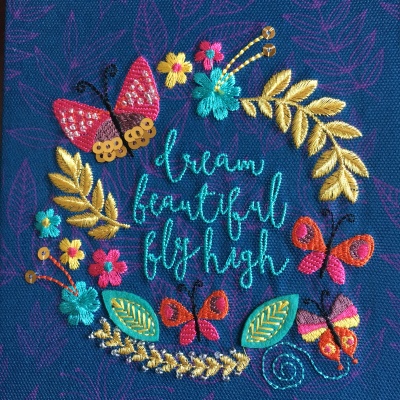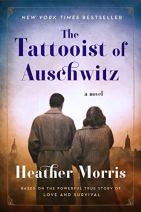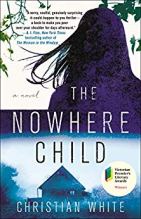We are each as vulnerable as the next person on the planet, and that was both a terrifying and enlightening fact.
Having recently read and reviewed Option B by Sheryl Sandberg and Adam Grant, I was looking for a new book to review for my next blog post. As I searched for options I kept being drawn to Any Ordinary Day: Blindsides, Resilience and What Happens After the Worst Day Of Your Life by Leigh Sales; a book that was very similar to Option B that I disregarded it. In the end I realised that there must a reason why I kept coming back to this book, so I should just go ahead and read it.
And I am glad I did. To some extent it is very similar story; a high profile woman blindsided by events beyond their control, reflecting on what happens after the worst day of their life and how we can all build resilience to work through life-changing events.
However, while there are many similarities and take-aways both give different perspectives. As an Australian Leigh’s examples, the Lindt Cafe siege, Stuart Diver and Thredbo landslide, the Port Arthur massacre, all resonate with an Australian reader and may not have as much meaning to those who have not lived in Australia in recent decades.
Leigh is also a journalist and gives her perspective on the media’s role in a victim or surviour’s journey. (Something I would have been interested in hearing from Sheryl given her position at Facebook.)
This was probably the part I read with most interest, as I believe that often the 24 hour media news cycle can make things worse for someone who has just experienced the worst day of their life.
Maximum public curiosity and therefore maximum media harassment coincide with the peak vulnerability of the people involved.
It was interesting to read how Leigh justified her role in this by it being “in the public interest” and if she didn’t do it someone else would.
Journalism has a culture that values and rewards breaking news, fresh angles that keep stories on the front page and juicy details that make people talk. From day one in journalism school, you’re taught that while you must behave ethically towards the people on whom you report, ultimately you serve the public above all else.
Coincidentally, I studied journalism at the same time as Leigh but moved away from it as a career pathway as I felt uncomfortable with the process. I feel that it is unethical to turn people’s suffering into “news” for public consumption and make money for the media owners and advertisers.
Another factor I found interesting was how many people she interviewed believed that faith helped them through.
This was something that also surprised Leigh.
Louisa’s positive attitude, born of her conviction that God has a plan for her, is admirable but I still have a hard time thinking the way she does.
This lead her to speak with a priest about his role in supporting people as they work though their experience.
Religion is an extraordinarily helpful tool at times of grief and loss because it offers both an explanation for the inexplicable and a supportive community.
Ultimately, whether it is a religious community, family and friends, people where you live or even people who live on the other side of the world, community is important.
Like Dunblane in Scotland and Port Arthur in Tasmania. Walter Mikac, who lost his family in the Port Arthur massacre, found support by connecting with a network of fathers who had lost children in the Dunblane school massacre.
Prior to that, I was thinking, There’s nobody in the world who really knows how I feel. Being in their company was a really healing thing.
Like Sheryl, Leigh also focuses on how friends and colleagues react to survivours and victims and how important it is to let go of our own concerns and insecurities to be there to support the person.
The fear is you’re going to do something that makes it worse. But I know now that the worst thing you can do is ignore it or pretend it’s not happening and not be there for them.
This reinforced to me how important it is to confront my fears and insecurities and to genuinely be there to support my family and friends during difficult times.
I completely understand that compulsion to look away, and so it seemed strange to me, as I embarked on this book, that I was choosing to do the opposite, to walk towards the pain and suffering, particularly when there had been a modest measure of it in my own life. Now that I know more about how our brains work, I think perhaps it was an effort to impose control. If I could understand the things that rattled me, perhaps I could harness my own rampaging fear.
Hmmm, perhaps this is why I was drawn to this book……
And the quote which resonated with me most?
All that I can tell you is that life is richer, kinder and safer than the news would have you believe. People are more decent. The things you think you wouldn’t be able to survive, you probably can. You will be okay. There’s really only one lesson to take from all of this and that is to be grateful for the ordinary days and to savour every last moment of them. They’re not so ordinary, really. Hindsight makes them quite magical.
Any Ordinary Day: Blindsides, Resilience and What Happens After the Worst Day Of Your Life, Leigh Sales, Penguin Random House Australia, 2018, ISBN 978-1-760-14417-3




 One Hundred Years Of Dirt by Rick Morton
One Hundred Years Of Dirt by Rick Morton
 The Last Tudor by Philippa Gregory
The Last Tudor by Philippa Gregory The Other Boleyn Girl by Philippa Gregory
The Other Boleyn Girl by Philippa Gregory The Year of the Farmer by Rosalie Ham
The Year of the Farmer by Rosalie Ham Girl with a Pearl Earring by Tracy Chevalier
Girl with a Pearl Earring by Tracy Chevalier Dirt Music by Tim Winton
Dirt Music by Tim Winton The Tattooist of Auschwitz by Heather Morris
The Tattooist of Auschwitz by Heather Morris The Kissing Season by Rachel Johns
The Kissing Season by Rachel Johns
 Ask Again, Yes by Mary Beth Keane
Ask Again, Yes by Mary Beth Keane










